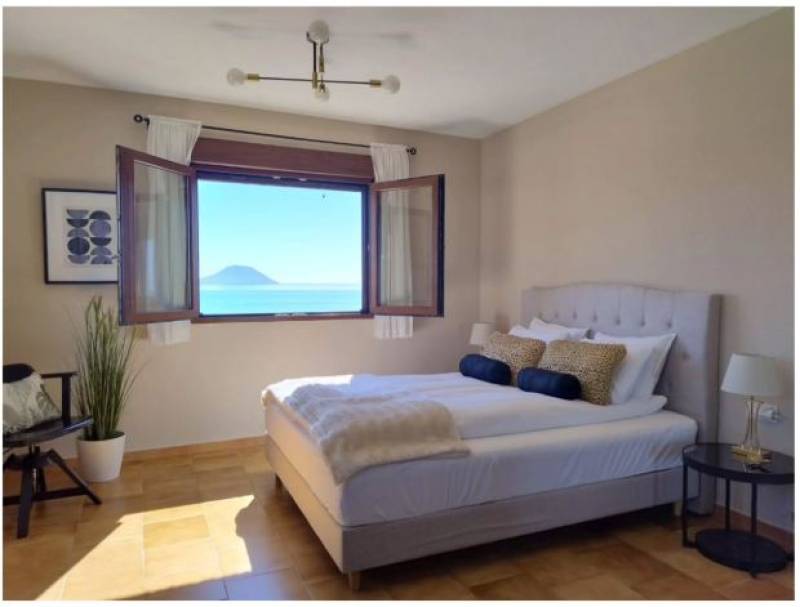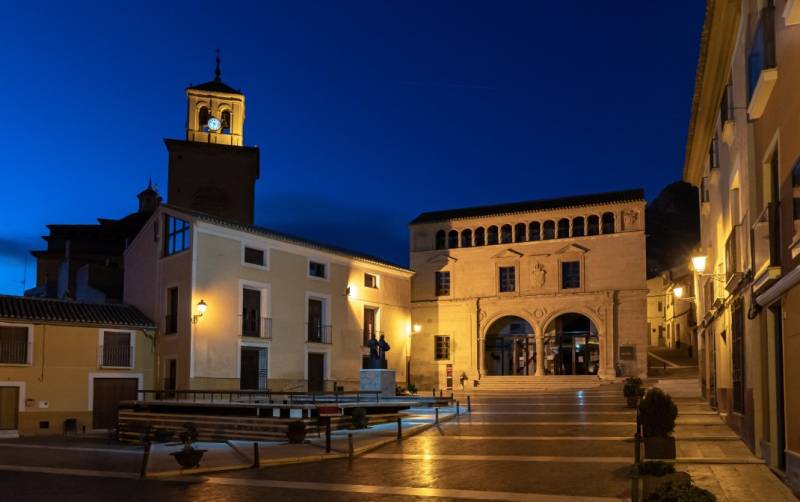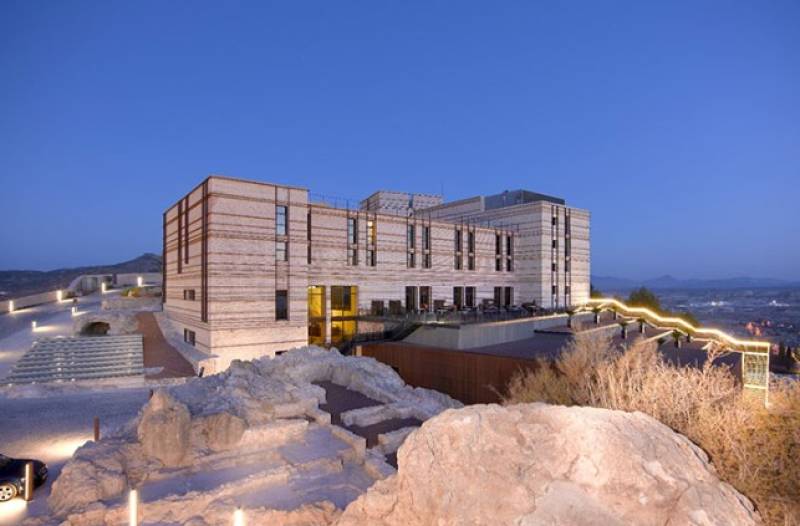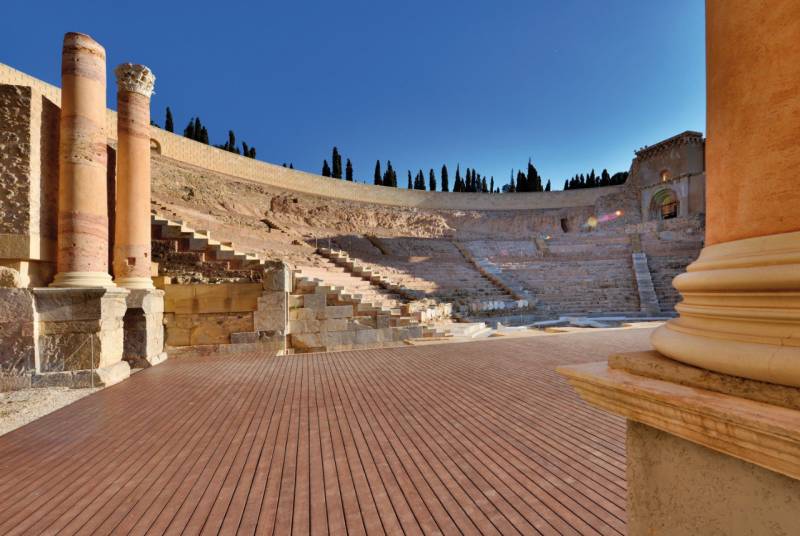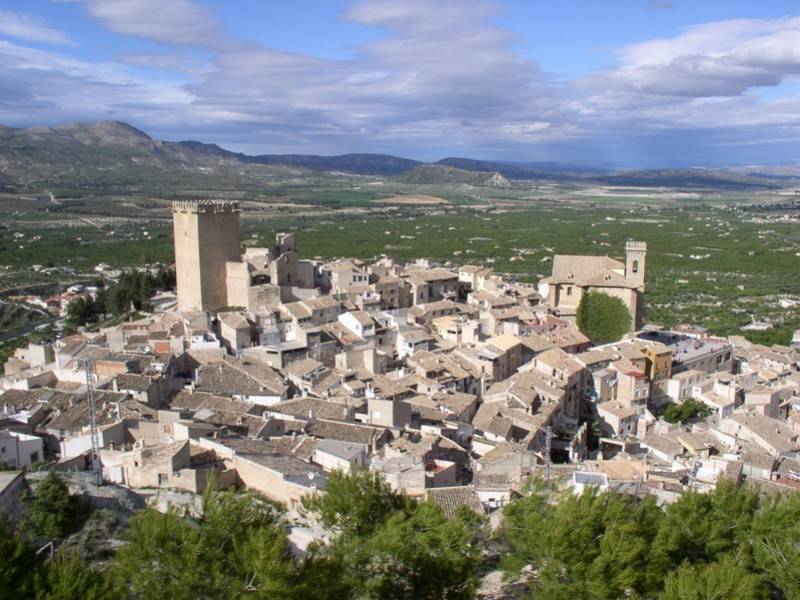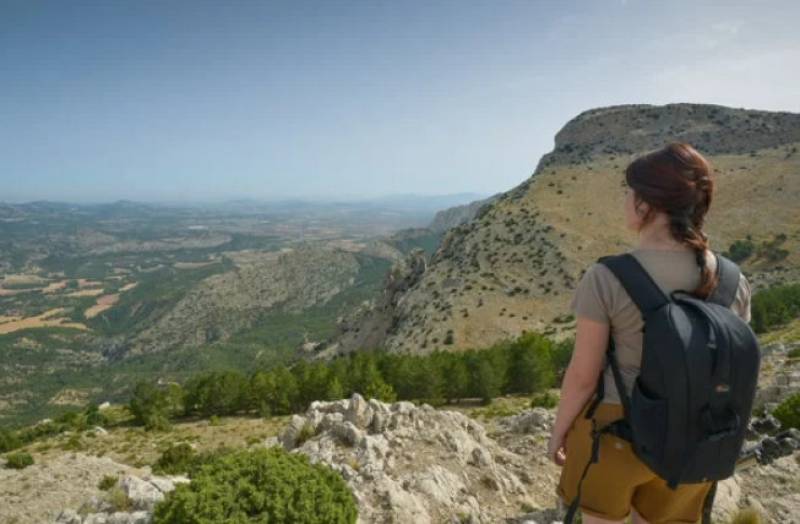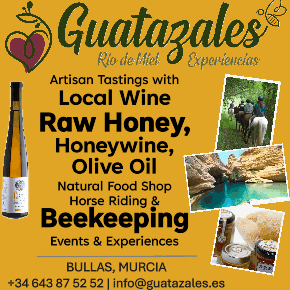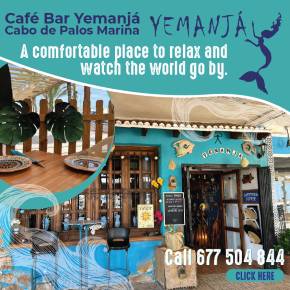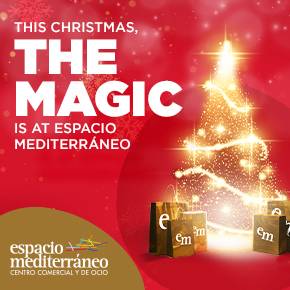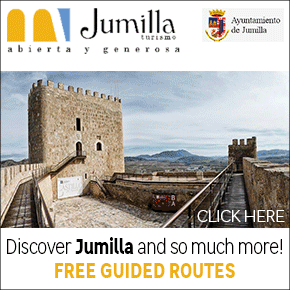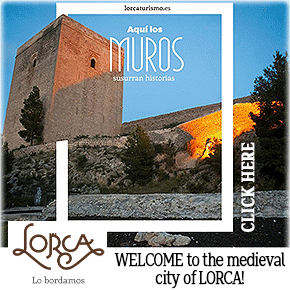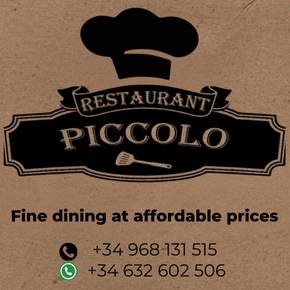- Region
- Águilas
- Alhama de Murcia
- Jumilla
- Lorca
- Los Alcázares
- Mazarrón
- San Javier
-
ALL AREAS & TOWNS
- AREAS
- SOUTH WEST
- MAR MENOR
- MURCIA CITY & CENTRAL
- NORTH & NORTH WEST
- TOWNS
- Abanilla
- Abarán
- Aguilas
- Alamillo
- Alcantarilla
- Aledo
- Alhama de Murcia
- Archena
- Balsicas
- Blanca
- Bolnuevo
- Bullas
- Cañadas del Romero
- Cabo de Palos
- Calasparra
- Camping Bolnuevo
- Campo De Ricote
- Camposol
- Canada De La Lena
- Caravaca de la Cruz
- Cartagena
- Cehegin
- Ceuti
- Cieza
- Condado de Alhama
- Corvera
- Costa Cálida
- Cuevas De Almanzora
- Cuevas de Reyllo
- El Carmoli
- El Mojon
- El Molino (Puerto Lumbreras)
- El Pareton / Cantareros
- El Raso
- El Valle Golf Resort
- Fortuna
- Fuente Alamo
- Hacienda del Alamo Golf Resort
- Hacienda Riquelme Golf Resort
- Isla Plana
- Islas Menores & Mar de Cristal
- Jumilla
- La Azohia
- La Charca
- La Manga Club
- La Manga del Mar Menor
- La Pinilla
- La Puebla
- La Torre
- La Torre Golf Resort
- La Unión
- Las Palas
- Las Ramblas
- Las Ramblas Golf
- Las Torres de Cotillas
- Leiva
- Librilla
- Lo Pagan
- Lo Santiago
- Lorca
- Lorquí
- Los Alcázares
- Los Balcones
- Los Belones
- Los Canovas
- Los Nietos
- Los Perez (Tallante)
- Los Urrutias
- Los Ventorrillos
- Mar De Cristal
- Mar Menor
- Mar Menor Golf Resort
- Mazarrón
- Mazarrón Country Club
- Molina de Segura
- Moratalla
- Mula
- Murcia City
- Murcia Property
- Pareton
- Peraleja Golf Resort
- Perin
- Pilar de la Horadada
- Pinar de Campoverde
- Pinoso
- Playa Honda
- Playa Honda / Playa Paraíso
- Pliego
- Portmán
- Pozo Estrecho
- Puerto de Mazarrón
- Puerto Lumbreras
- Puntas De Calnegre
- Region of Murcia
- Ricote
- Roda Golf Resort
- Roldan
- Roldan and Lo Ferro
- San Javier
- San Pedro del Pinatar
- Santiago de la Ribera
- Sierra Espuña
- Sucina
- Tallante
- Terrazas de la Torre Golf Resort
- Torre Pacheco
- Totana
- What's On Weekly Bulletin
- Yecla


- EDITIONS:
 Spanish News Today
Spanish News Today
 Alicante Today
Alicante Today
 Andalucia Today
Andalucia Today
The Via Crucis in Totana, stunning sculpture set in the beautiful Sierra Espuna
A 1-km walk with fabulous views alongside the Sanctuary of Santa Eulalia, Totana
This Vía Crucis of Santa Eulalia is an unexpected gem set in the green hillsides of the Sierra Espuña.
The road winds uphill for a kilometre from the picnic area of El Ángel, which is opposite the sanctuary of Santa Eulalia, sculptures of the stations of the cross glowing white against the pine-clad rocks of the roadside, marking a path up to a vast figure of Christ and glorious views out across the agricultural plains below.
It's a fabulous place to bring the visitors and show them just how lucky you are to live in Murcia, and is a calm oasis of pine-scented soul food even after the summer heat on a breezy July evening.
To top it all off, there's a picnic area at the bottom, calling out for a seat in the shade, a good book and a hearty sandwich!
Santa Eulalia
Opposite the Vía Crucis is the Santuario de la Santa, a former religious structure which has been converted into a hotel and leisure complex. The hotel ho0lds arts and crafts fairs throughout the cooler months and is also used for functions and special occasions. The beautifully painted chapel is the home of the figure of Santa Eulalia of Mérida, the patron saint of Totana, who is carried down 7 kilometres into town annually in a Romeria accompanied by thousands of locals.
Her descent and subsequent ascent along the twisting road between the sanctuary and the town are huge events locally, when the whole area surrounding the sanctuary is filled with families and friends enjoying a convivial meal after a good walk: participation in this annual event is an experience to be enjoyed should the opportunity present itself!
Santa Eulalia de Mérida is not a local saint but was brought to this area by the Order of Santiago, a community of religious knights who took control of the area in 1257 after the Kingdom of Murcia was taken from the Moors by the Kingdom of Castilla. Prior to that, Murcia had been in the hands of the Moors for more than 500 years and had formed part of the Moorish Kingdom of Tudmir.
She was the patron saint of the order of Santiago and a small centre of worship was established here, although at that point the fortress of Aledo was significatly more important as the area lay on the border with the last remaining Nazrid Kingdom of Granada, and was subject to frequent raids across the border. The old keep and medieval walls can still be seen today in Aledo.
Santa Eulalia is also th epatron of the ill and many miracles pertaining to healing and cripples are attributed to her intervention. She was martyred at the age of twelve, suffering torture at the hands of the Romans.
Her cult virtually died out in the 14th century, but by the 16th century a more substantial building had been erected in Totana and the current sanctuary continued to evolve until the present day.
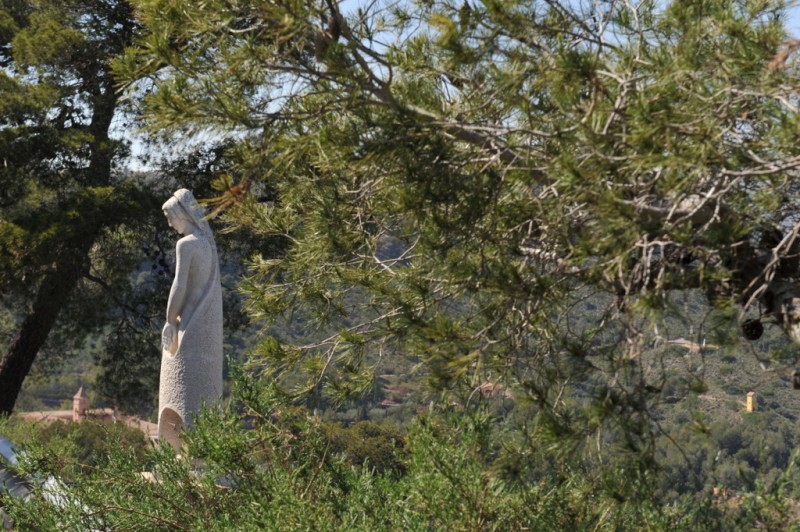
The Vía Crucis
The words Via Crucis mean Way of the Cross, representing the most important moments of Jesus during the last days of his life, crucifixion and subsequent resurrection.
There are Via Crucis throughout Spain, often to be found as tiled plaques or crosses on the walls of village houses, or very occasionally, as in this particular case, in sculptural form. During Lent it is customary to follow the route of the Via Crucis, stopping at each point for a biblical reading, a prayer, a lesson, or a song.
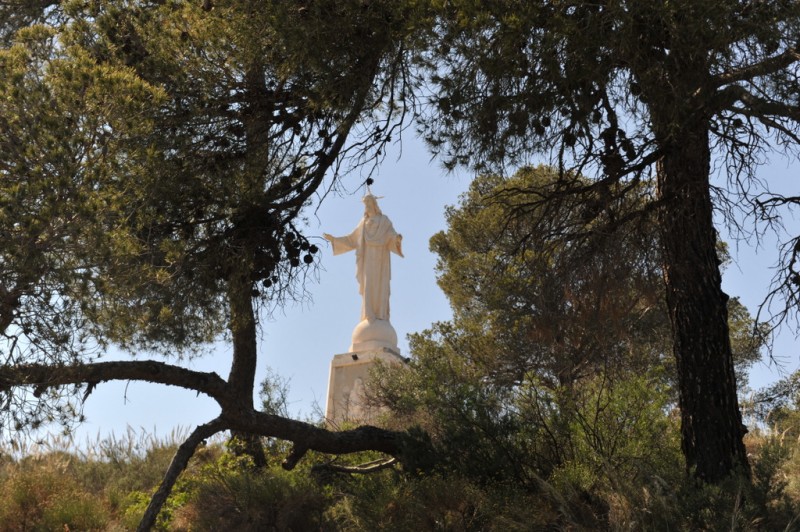
This sculptural Via Crucis was built in 1965 by Don Juan José Noguera, who was the priest at the church in the sanctuary, and comprises 14 pieces by Murcia sculptor Anastasio Martínez Valcárcel, including the monumental 9-metre Sagrado Corazon de Jesus which dominates the surrounding countryside.
It's a stunning collection of curvaceous, elegant pieces, and although they were created in the 1960's the pieces seem fresh and contemporary, their flowing lines complementing the smooth rocks and twisting roots which almost immerse them. They rise from the foliage to project their message then disappear back into the landscape as the onlooker continues on the journey followed by Christ in the last week of his life.
At the last station visitors stop off to absorb the countryside below them spread beneath their feet and contemplate the sorrow of those who loved him, before turning to witness the glory of the resurrection as the immense white figure of Christ resurrected punches through the bright blue skyline.
Religious or not, it's an uplifting experience to see such beautiful pieces in an open-air setting and drink in the air as you walk.
Parking is available in the El Ángel car park and barbecue area at the bottom, approximately one kilometre down the hill, or persuade the car driver to leave the passengers at the top so they can have the luxury of only having to walk down. Those with restricted mobility can enjoy a steady drive up and down, slowing to observe the sculptures and the magnificent views at the top.
The first piece seen in the car park is the Angel, pointing the way up the hill, created by the father of the man who sculpted the Vía Crucis, Nicolás Martínez.
The stations are then positioned on both sides of the road as follows
- Jesus is condemned to death
- Jesus accepts the burden of the cross
- Jesus falls for the first time
- Jesus meets his mother, Mary
- Simon helps Jesus to shoulder his burden
- The feet of Jesus are washed
- Jesus falls for the second time
- Jesus urges the daughters of Jerusalem not to cry for him
- Jesus falls for the third time
- Jesus is stripped of his garments
- Jesus is nailed to the cross
- Jesus dies on the cross
- Jesus in the arms of his mother
- Jesus in the tomb
- Jesus arisen
Enjoy!

Access
This is an uphill road and is not the easiest of places for those with physical disabilities. The car park at the top gives splendid views but both of the viewing points have stepped access, although the sculptures can be clearly seen from a car.
Directions
The sanctuary is on the main Totana-Aledo road, a winding uphill route which twists through the forest and is a pleasant if slow journey. The Via Crucis is just a short distance past the sanctuary on the left and from here Aledo, a medieval hilltop town, is just a short drive away, with yet more stunning views. The snow wells are this side of the Sierra Espuña.
Driving into the centre of Totana, you will see the signposts for the Sanctuary, Sierra Espuña and Aledo. Cross the river alongside the Town Hall, then follow the road around to the left up Santa Eulalia. This is the main road out of the back of Totana.
Click for more information about the municipality of Totana.











